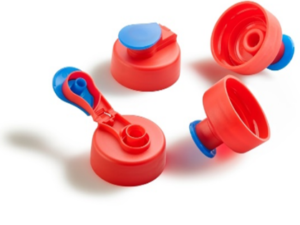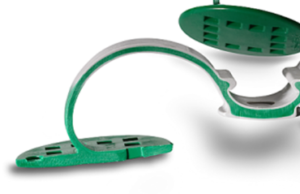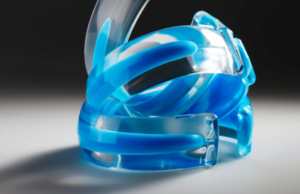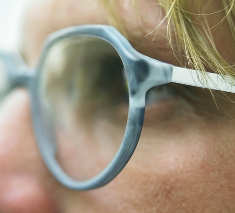
Multi-Component Injection Molding for Added Value and High Cost-Efficiency.
There is much more to multi-component injection molding than just combining two or more materials/colors. You can also improve the design and function of products automatically and cost-effectively.
Multi-component molding is highly diverse and can involve many different techniques and technologies. From marbling, interval, sandwich and assembly injection molding and the core-back process through to transfer, rotation or turning stack mold technology and combinations thereof.
Utilizing these different technologies, you can implement unique design solutions or optimize product properties in a targeted approach and integrate functional elements. Furthermore, using fully automated production without additional assembly steps or reworking minimizes unit costs.
Sandwich Injection Molding
Sandwich structures can be achieved with single-component molds through an orderly injection sequence involving two injection units. The typical three-layer design is achieved with the aid of an interval unit as an accessory.
Interval Injection Molding
This process enables colored surface effects to be reproduced through targeted timing control of two injection units. There is no clear color boundary between the components. As in sandwich injection molding, you can use cost-effective, single-component molds.
Marbling
During marbling, colored surface effects are achieved by inhomogeneous mixing of several plastics in one injection unit. Consequently, there is no clear color boundary, and the color effects are unique for the individualism of each part.
Rotation Technology
The pre-molded parts are transferred to the second station via a horizontal rotary movement. They remain in the amount of the mold that is rotated and is not demolded. Internal or external mold rotary devices are required as accessories for this purpose.
In-Mold Assembly Injection Molding
This includes all processes with the transfer, rotation or stack-turning mold technology in which assembly steps are integrated directly into the injection molding process. Assembly occurs either in the mold following injection, and either two incompatible components are combined without a positive material bond using the injection molding process. This procedure offers a great deal of added value.
 Stack-Turning Mold Technology
Stack-Turning Mold Technology
For high-cavity molds with a small clamping area and low locking forces: using stack molds, pre-molded part and finished molded parts can be produced simultaneously in parting lines positioned one in front of the other. As well as two-station molds, cube molds with four stations are also used. These also have the advantage of additional process steps.
Contact the experts
When it comes to implementing your innovative production and product ideas, it is crucial to choose the right partner.
As a pioneer, ARBURG has been successfully involved in the production of multi-component molded parts since 1962. They have extensive knowledge of application technology, modular and configurable machine concepts and a wealth of know-how and expertise in their dedicated multi-component consulting services.
For more information: Multi-component injection molding – ARBURG
Or Contact Turner Group at sales@turnergroup.net



